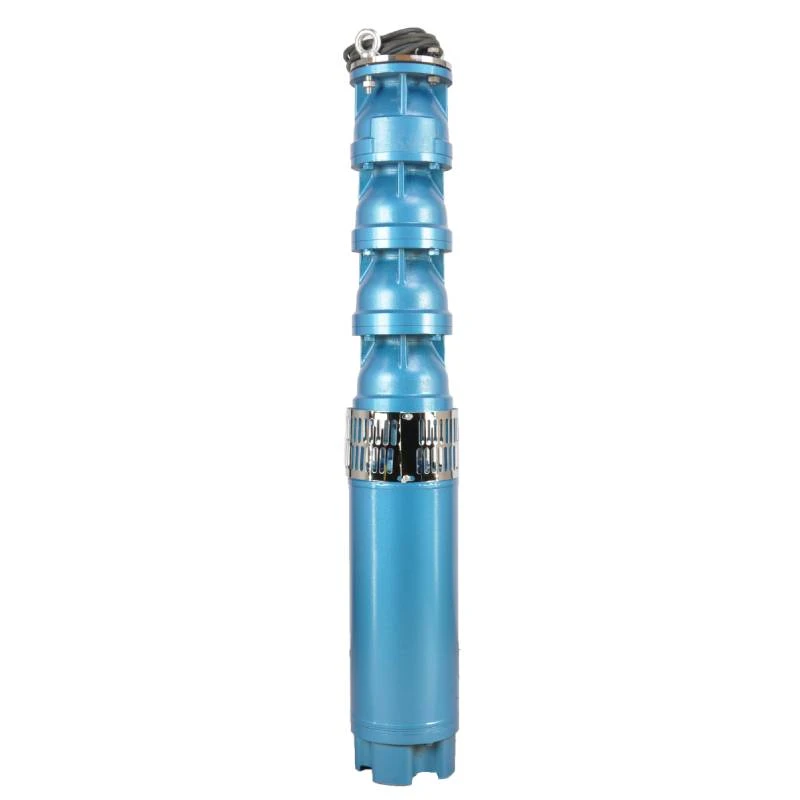Nov . 12, 2024 12:44 Back to list
how do submersible pumps work
How Do Submersible Pumps Work?
Submersible pumps are essential devices that are widely used in various applications, from water extraction to wastewater management. Understanding how these pumps work can offer insight into their efficiency and functionality. This article will explore the mechanics behind submersible pumps, their various types, and the applications they serve.
What is a Submersible Pump?
A submersible pump is a type of pump designed to operate while submerged in fluid. Unlike other pumping systems that must draw fluid up from a distance, submersible pumps are located underwater, making them highly effective for pumping water from deep wells, lakes, or reservoirs. The design of these pumps varies, but they generally comprise a motor, impeller, and a series of pipes or hoses.
How Submersible Pumps Operate
The operation of a submersible pump can be understood through its key components. The motor is typically located at the base, surrounded by a sealed housing that protects it from the surrounding water. This design prevents the motor from becoming damaged and ensures it can operate effectively while submerged.
When the motor runs, it rotates the impeller, which is a crucial component responsible for moving the fluid. The impeller is shaped like a series of blades or vanes that spin rapidly. As the impeller spins, it creates a centrifugal force that draws fluids into the pump. The fluid enters through the intake screen, which prevents debris from clogging the pump.
Once the fluid is inside the pump, the rapidly spinning impeller forces it outward and upward through the discharge pipe. This process is known as centrifugal pumping. The design of the pump ensures that the fluid can travel efficiently up and out of the submerged area.
Submersible pumps often feature multiple impellers, especially in more powerful models, which help increase the volume of fluid being pumped. These multistage pumps are especially effective in applications requiring high pressure over considerable vertical distances.
Types of Submersible Pumps
Submersible pumps come in various types, tailored for specific applications. The most common types include
1. Sump Pumps Typically used in residential basements or flooded areas to remove unwanted water. 2. Well Pumps Designed to extract water from deep wells. They can have varying capacities depending on the depth of the well.
how do submersible pumps work

3. Effluent Pumps Used to transport lightly contaminated water, such as water from septic systems.
4. Slurry Pumps Engineered to handle slurries, which are mixtures of liquid and solid. They are commonly used in mining and construction applications.
5. Submersible Fountain Pumps Specifically designed for use in decorative fountains and ponds, these pumps help recirculate water efficiently.
Applications of Submersible Pumps
Submersible pumps are used in a variety of applications across different industries due to their efficiency and unique design.
1. Agriculture Farmers frequently use submersible pumps to irrigate crops and maintain water supply during dry seasons.
2. Construction In construction sites, these pumps are essential for dewatering excavations and managing groundwater.
3. Municipal Services Municipalities employ submersible pumps in sewage treatment facilities to manage wastewater effectively.
4. Mining and Drilling Submersible pumps are utilized to remove water from mines and to help in the extraction of minerals.
5. Renewable Energy In certain renewable energy systems, submersible pumps can be used to move fluids in geothermal plants or assist in hydroponic setups.
Conclusion
Submersible pumps play a vital role in a multitude of sectors by providing efficient fluid movement solutions. Their ability to operate underwater, combined with their design and mechanism of action, allows them to excel in a range of applications from household to industrial uses. Understanding how these pumps function not only highlights their importance but also enables users to select the right type of submersible pump for their specific needs. As technology continues to advance, submersible pumps will likely become even more efficient, further solidifying their place in modern fluid management systems.
-
Submersible Water Pump: The Efficient 'Power Pioneer' of the Underwater World
NewsJul.01,2025
-
Submersible Pond Pump: The Hidden Guardian of Water Landscape Ecology
NewsJul.01,2025
-
Stainless Well Pump: A Reliable and Durable Pumping Main Force
NewsJul.01,2025
-
Stainless Steel Submersible Pump: An Efficient and Versatile Tool for Underwater Operations
NewsJul.01,2025
-
Deep Well Submersible Pump: An Efficient 'Sucker' of Groundwater Sources
NewsJul.01,2025
-
Deep Water Well Pump: An Efficient 'Sucker' of Groundwater Sources
NewsJul.01,2025
-
 Submersible Water Pump: The Efficient 'Power Pioneer' of the Underwater WorldIn the field of hydraulic equipment, the Submersible Water Pump has become the core equipment for underwater operations and water resource transportation due to its unique design and excellent performance.Detail
Submersible Water Pump: The Efficient 'Power Pioneer' of the Underwater WorldIn the field of hydraulic equipment, the Submersible Water Pump has become the core equipment for underwater operations and water resource transportation due to its unique design and excellent performance.Detail -
 Submersible Pond Pump: The Hidden Guardian of Water Landscape EcologyIn courtyard landscapes, ecological ponds, and even small-scale water conservancy projects, there is a silent yet indispensable equipment - the Submersible Pond Pump.Detail
Submersible Pond Pump: The Hidden Guardian of Water Landscape EcologyIn courtyard landscapes, ecological ponds, and even small-scale water conservancy projects, there is a silent yet indispensable equipment - the Submersible Pond Pump.Detail -
 Stainless Well Pump: A Reliable and Durable Pumping Main ForceIn the field of water resource transportation, Stainless Well Pump has become the core equipment for various pumping scenarios with its excellent performance and reliable quality.Detail
Stainless Well Pump: A Reliable and Durable Pumping Main ForceIn the field of water resource transportation, Stainless Well Pump has become the core equipment for various pumping scenarios with its excellent performance and reliable quality.Detail
